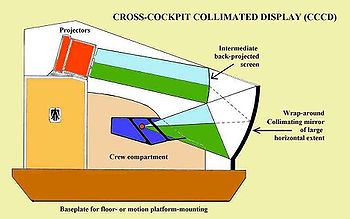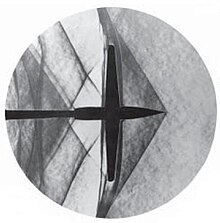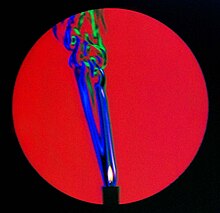Hi Everybody!!
The Spotlight is focused on the resident Birds of Rainbow Creek as the migrants travel on North. The birds in your photostudy live at the Sanctuary year round (by choice). I prefer to shoot in the spotlight of the Sun as it filters through the trees of the courtyard. A camera is only a tool to record light. The action is in the light itself. Now whatever You know about light, You do not know enough. As most of You come to the mini nature class to learn something, tonight's topic will be a spot of Light! I have selected some topics from the Google Index You may not have heard about before. Learn something new everyday. Enjoy!
The crow
The daddy cardinal
The new baby female cardinal
http://www.thefreedictionary.com/spotlight
<a href="http://www.thefreedictionary.com/spotlight">spotlight</a>
spot·light (sp
 t
t l
l t
t )
)
n.
1.a. A strong beam of light that illuminates only a small area, used especially to center attention on a stage performer.
b. A lamp that produces such a light.
2. Public notoriety or prominence: She was in the spotlight after she won the marathon.
3. An artificial source of light with a strongly focused beam, as on an automobile.
tr.v. spot·light·ed or spot·lit (-l t), spot·light·ing, spot·lights
t), spot·light·ing, spot·lights
spotlight [ˈspɒtˌlaɪt] t), spot·light·ing, spot·lights
t), spot·light·ing, spot·lights
1. To illuminate with a spotlight.
2. To focus attention on.
n
1. (Electronics) a powerful light focused so as to illuminate a small area, usually mounted so that it can be directed at will
2. the. the focus of attention
vb -lights, -lighting, -lit, -lighted (tr)
spot•light (ˈspɒtˌlaɪt)
1. (Performing Arts / Theatre) to direct a spotlight on
2. to focus attention on
n., v. -light•ed -lit, -light•ing. n.
1. an intense light focused so as to pick out an object, person, or group, as on a stage.
2. a lamp for producing such a light.
3. a brilliant narrowly focused light, as on an automobile, used for spotting objects.
4. the area of immediate or conspicuous public attention: Asia is in the spotlight now.
v.t.
5. to direct the beam of a spotlight upon.
6. to make conspicuous; call attention to.
http://en.wikipedia.org/wiki/Collimated_light
Collimated light
From Wikipedia, the free encyclopedia
Etymology [edit]
The word "collimate" comes from the Latin verb collimare, which originated in a misreading of collineare, "to direct in a straight line".[1]
Sources [edit]
Lasers [edit]
Laser light from gas or crystal lasers is highly collimated because it is formed in an optical cavity between two parallel mirrors, in addition to being coherent. In practice, gas lasers use slightly concave mirrors, otherwise the power output would be unstable due to mirror non-parallelism from thermal and mechanical stresses. The divergence of high-quality laser beams is commonly less than 1 milliradian, and can be much less for large-diameter beams. Laser diodes emit less-collimated light due to their short cavity, and therefore higher collimation requires a collimating lens.
Synchrotron light [edit]
Synchrotron light is very well collimated. It is produced by bending relativistic electrons (i.e. those moving at relativistic speeds) around a circular track.
Distant sources [edit]
The light from stars (other than the Sun) can be considered collimated for almost any purpose, because they are so far away they have almost no angular size.
Lenses and mirrors [edit]
A perfect parabolic mirror will bring parallel rays to a focus at a single point. Conversely, a point source at the focus of a parabolic mirror will produce a beam of collimated light creating a Collimator. Since the source needs to be small, such an optical system cannot produce much optical power. Spherical mirrors are easier to make than parabolic mirrors and they are often used to produce approximately collimated light. Many types of lenses can also produce collimated light from point-like sources.
Collimated displays in flight simulators [edit]
This principle is used in Full Flight Simulators (FFS), that have specially designed systems for displaying imagery of the Out-The-Window (OTW) scene to the pilots in the replica aircraft cabin.
In aircraft where two pilots are seated side by side, if the OTW imagery were projected in front of the pilots on a screen, one pilot would see the correct view but the other would see a view where some objects in the scene would be at incorrect angles.
To avoid this, collimated optics are used in the simulator visual display system so that the OTW scene is seen by both pilots at a distant focus rather than at the focal distance of a projection screen. This is achieved through an optical system which allows the imagery to be seen by the pilots in a mirror which has a vertical curvature, the curvature enabling the image to be seen at a distant focus by both pilots, who then see essentially the same OTW scene without any distortions.
This is shown diagramatically in more detail in the entry on Full Flight Simulators.
Collimation and decollimation [edit]
"Collimation" refers to all the optical elements in an instrument being on their designed optical axis. It also refers to the process of adjusting an optical instrument so that all its elements are on that designed axes (in line and parallel). With regards to a telescope the term refers to the fact that the optical axes of each optical component should all be centered and parallel, so that collimated light emerges from the eyepiece. Most amateur reflector telescopes need to be re-collimated every few years to maintain optimum performance. This can be done by simple visual methods such as looking down the optical assembly with no eyepiece to make sure the components are lined up, by using a Cheshire eyepiece, or with the assistance of a simple laser collimator or autocollimator. Collimation can also be tested using a shearing interferometer, which is often used to test laser collimation.
"Decollimation" is any mechanism or process which causes a beam with the minimum possible ray divergence to diverge or converge from parallelism. Decollimation may be deliberate for systems reasons, or may be caused by many factors, such as refractive index inhomogeneities, occlusions, scattering,deflection, diffraction, reflection, and refraction. Decollimation must be accounted for to fully treat many systems such as radio, radar, sonar, and opticalcommunications.
See also [edit]
http://en.wikipedia.org/wiki/Schlieren_photographySchlieren photography
From Wikipedia, the free encyclopedia
Optical system [edit]
The basic optical schlieren system uses light from a single collimated source shining on, or from behind, a target object. Variations in refractive index caused by density gradients in the fluid distort the collimated light beam. This distortion creates a spatial variation in the intensity of the light, which can be visualised directly with ashadowgraph system.
In schlieren photography, the collimated light is focused with a lens, and a knife-edge is placed at the focal point, positioned to block about half the light. In flow of uniform density this will simply make the photograph half as bright. However in flow with density variations the distorted beam focuses imperfectly, and parts which have been focused in an area covered by the knife-edge are blocked. The result is a set of lighter and darker patches corresponding to positive and negative fluid density gradients in the direction normal to the knife-edge. When a knife-edge is used, the system is generally referred to as a schlieren system, which measures the first derivative of density in the direction of the knife-edge. If a knife-edge is not used, the system is generally referred to as ashadowgraph system, which measures the second derivative of density.
If the fluid flow is uniform the image will be steady, but any turbulence will cause scintillation, the shimmering effect that can be seen on hot surfaces on a sunny day. To visualise instantaneous density profiles, a short duration flash (rather than continuous illumination) may be used.
Variations [edit]
Variations on the optical schlieren method include the replacement of the knife-edge by a colored "bullseye" target, resulting in Rainbow Schlieren which can assist in visualising the flow. The adaptive optics pyramid wavefront sensor is a modified form of schlieren (having two perpendicular knife edges formed by the vertices of a refracting square pyramid).
Few complete schlieren optical systems are commercially available today, but details of theory and construction are given in Settles' 2001 book.[1] The USSR produced a number of sophisticated schlieren systems based on theMaksutov telescope principle, many of which still survive in the former Soviet Union and China.
Synthetic schlieren [edit]
The synthetic schlieren method is a technique similar to schlieren photography which makes use of digital photography and image processing rather than optics to visualize the density variations of a fluid.
See also [edit]
http://www.youtube.com/watch?v=bUsJS3KA8HQ
http://en.wikipedia.org/wiki/R.E.M.
R.E.M.
From Wikipedia, the free encyclopedia
| R.E.M. | |
|---|---|
 R.E.M. in concert in Padova, Italy, in July 2003. From left to right: touring musician Scott McCaughey,Michael Stipe, touring drummer Bill Rieflin, andPeter Buck. | |
| Background information | |
| Also known as | Hornets Attack Victor Mature,[1]Bingo Hand Job,[2]It Crawled from the South[3] |
| Origin | Athens, Georgia, United States |
| Genres | Alternative rock, college rock,jangle pop |
| Years active | 1980–2011 |
| Labels | Hib-Tone, I.R.S., New West,Warner Bros. |
| Associated acts | Automatic Baby, The Baseball Project,Hindu Love Gods, The Minus 5,Tuatara, Tired Pony |
| Website | remhq.com |
| Past members | |
R.E.M. was an American rock band from Athens, Georgia, formed in 1980 by singer Michael Stipe, guitaristPeter Buck, bassist Mike Mills, and drummer Bill Berry. One of the first popular alternative rock bands, R.E.M. gained early attention because of Buck's ringing, arpeggiated guitar style and Stipe's unclear vocals. R.E.M. released its first single, "Radio Free Europe", in 1981 on the independent record label Hib-Tone. The single was followed by the Chronic Town EP in 1982, the band's first release on I.R.S. Records. In 1983, the group released its critically acclaimed debut album, Murmur, and built its reputation over the next few years through subsequent releases, constant touring, and the support of college radio. Following years of underground success, R.E.M. achieved a mainstream hit in 1987 with the single "The One I Love". The group signed to Warner Bros. Records in 1988, and began to espouse political and environmental concerns while playing large arenas worldwide.
PLEASE VISIT WIKIPEDIA PAGE FOR COMPLETE ARTICE-LINK ABOVE.
.....this is brendasue signing off from Rainbow Creek. See You next time. Time for YOU to step into the spotlight. Are You ready?!
Of course, one more great performance:
http://www.youtube.com/watch?v=YH7jeijCSgk
O+O























No comments:
Post a Comment
Hi Everybody! Please say hello and follow so I know you are here! Due to the inconsideration of people trying to put commercials on my blog comment area, I have restricted use of anonymous posts. Sorry that some hurt all.
My public email is katescabin@gmail.com No spammers or trolls